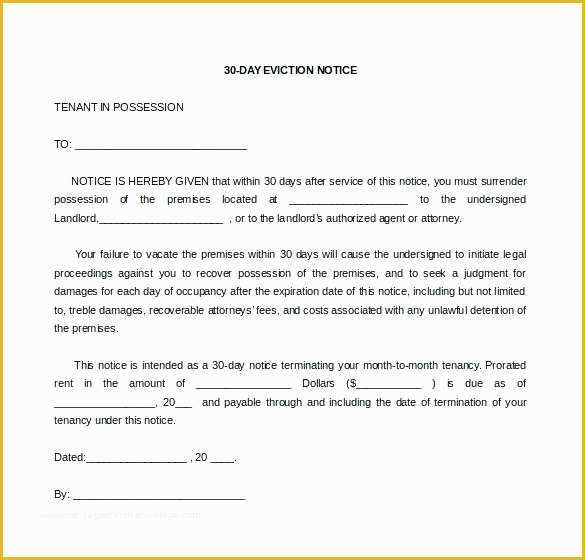

15-Day Notice to Pay or Quit–Landlords should use this notice when their tenant has COVID-19 rental debt.3-Day Notice to Perform Covenant or Quit–Landlords should use this notice if their tenant violated the lease and the problem can be fixed.3-Day Notice to Pay Rent or Quit–Landlords should use this notice if their tenant has failed to pay rent.3-Day Notice to Quit–Landlords should use this notice if their tenant is responsible for serious problems at the rental property.These notices vary, of course, depending on the facts of each case as each case is unique. Before focusing in on a few key notices, here’s a quick, more comprehensive list of different eviction notices. This type of notice that the property owner needs to give the tenant depends on the reason for eviction. A notice is a written warning that a landlord is going to start a court case if the tenant does not move out or fix a problem. This eviction process begins when the property owner gives the tenant a written notice. The Different Types of California Eviction NoticesĪs mentioned in the introduction, landlords and property owners must go through a legal process before they can ask for a court order that states that the tenant must move out of the rental property. In the next section, we discuss some of the different types of California eviction notices. Compared to no-fault just cause evictions, at-fault just cause convictions allow the landlord to serve a notice that has a much shorter period which the tenant needs to take action–in many cases the time period being 3-days. For detailed information and to hear how our attorneys can help you with your eviction or unlawful detainer, call Forward Law Group today. While the list above presents some of the most common reasons for at-fault just cause evictions, many other things can constitute an at-fault eviction in California as well. Subletting or subleasing in violation of the signed lease.A breach of a significant provision or material term of the lease agreement.Criminal activity occurring on the rental property or use of rental property for illegal purposes.California At-Fault Just Cause Evictions: Key Detailsĭue to the fact that the ongoing Covid-19 Moratorium is likely to come to an end in the near future, our attorneys at Forward Law Group have seen an uptick in calls about at-fault just cause evictions because of reasons such as: In this article, we are focusing on at-fault just cause evictions. No-fault just cause evictions, on the other hand, are when the property owner or landlord want to evict a tenant at no fault of the tenant, for example, when the property owner or landlord wants to move into the property. This would be the case if, for example, a tenant does not pay the agreed-upon rent timely. In simple terms, when a tenancy is terminated based on the fault of a tenant this is considered an at-fault eviction. There are two types of just cause evictions-at-fault just cause evictions and no-fault just cause evictions. In California, having a just cause is a requirement for removing or evicting a tenant who has continuously occupied a rental unit for at least 12 months. Evictions in California: A Quick Background From there, our attorneys will cover a few different types of eviction notices, providing a description of each one along with valuable information about when they are used.

In this article, we begin by providing a brief background and the essential details about California evictions, such as the difference between at-fault and not at-fault evictions. As lawyers with a wealth of experience with unlawful detainers (also known as an eviction) in California, Forward Law Group seeks to help readers by providing simple, straightforward, and accurate information. 3-Day Notice to Perform Covenant or Quitīecause most evictions across the state were on hold (due to the pandemic) for quite a while, in recent months our law firm has been getting many calls from property owners who need assistance and information about what the eviction process in California is like and which eviction notice they should use.There are three primary eviction notices in California: In many cases, executing an eviction notice improperly can land a property owner in trouble and even result in a lawsuit against them. During an eviction, it is important to make sure that all the steps in the process are done accurately, which includes using the correct California eviction notice. In California, there are a few different eviction notices that all landlords should be familiar with. As a result, at times, you may have to evict a tenant. As property owners and landlords, issues can arise when you rent out your property.


 0 kommentar(er)
0 kommentar(er)
